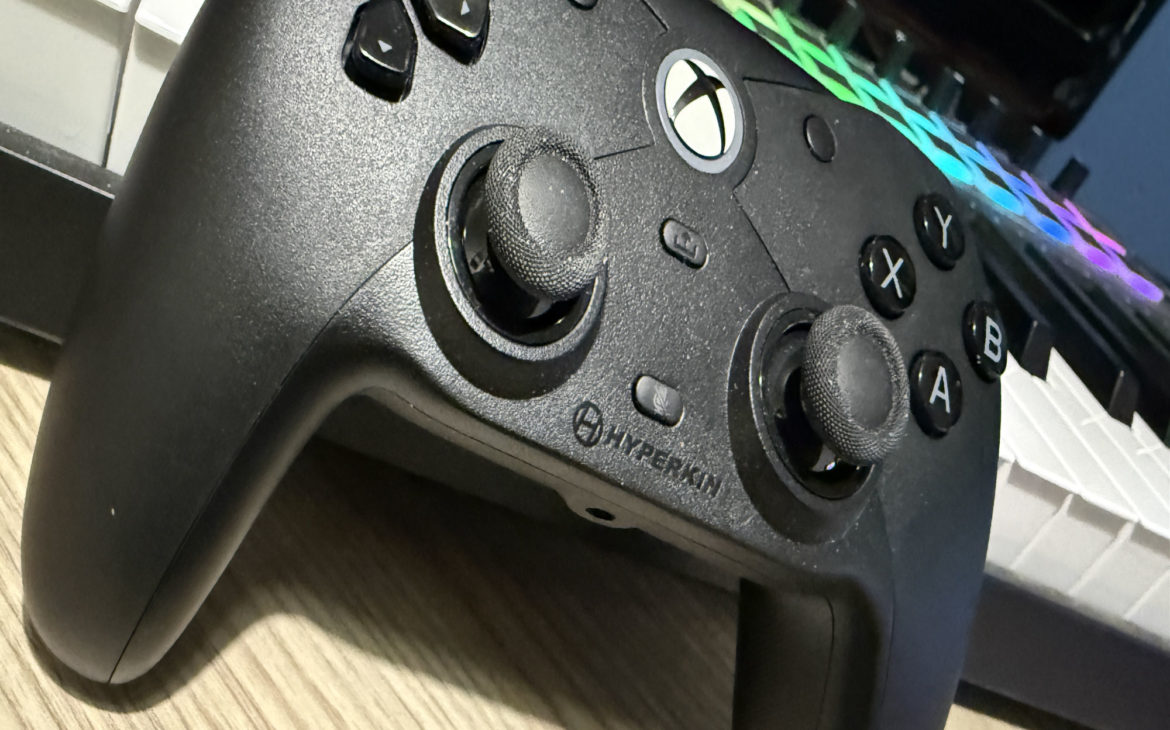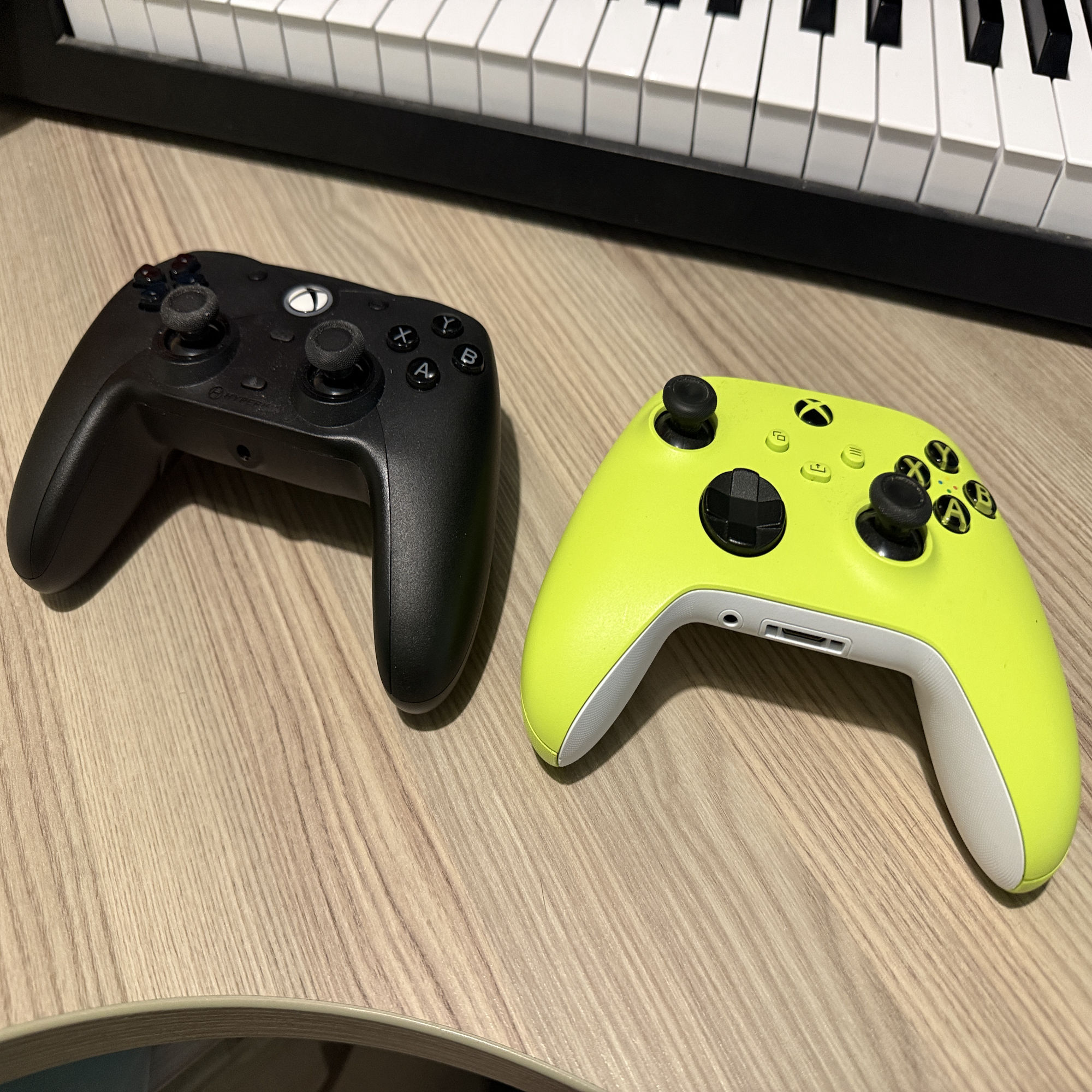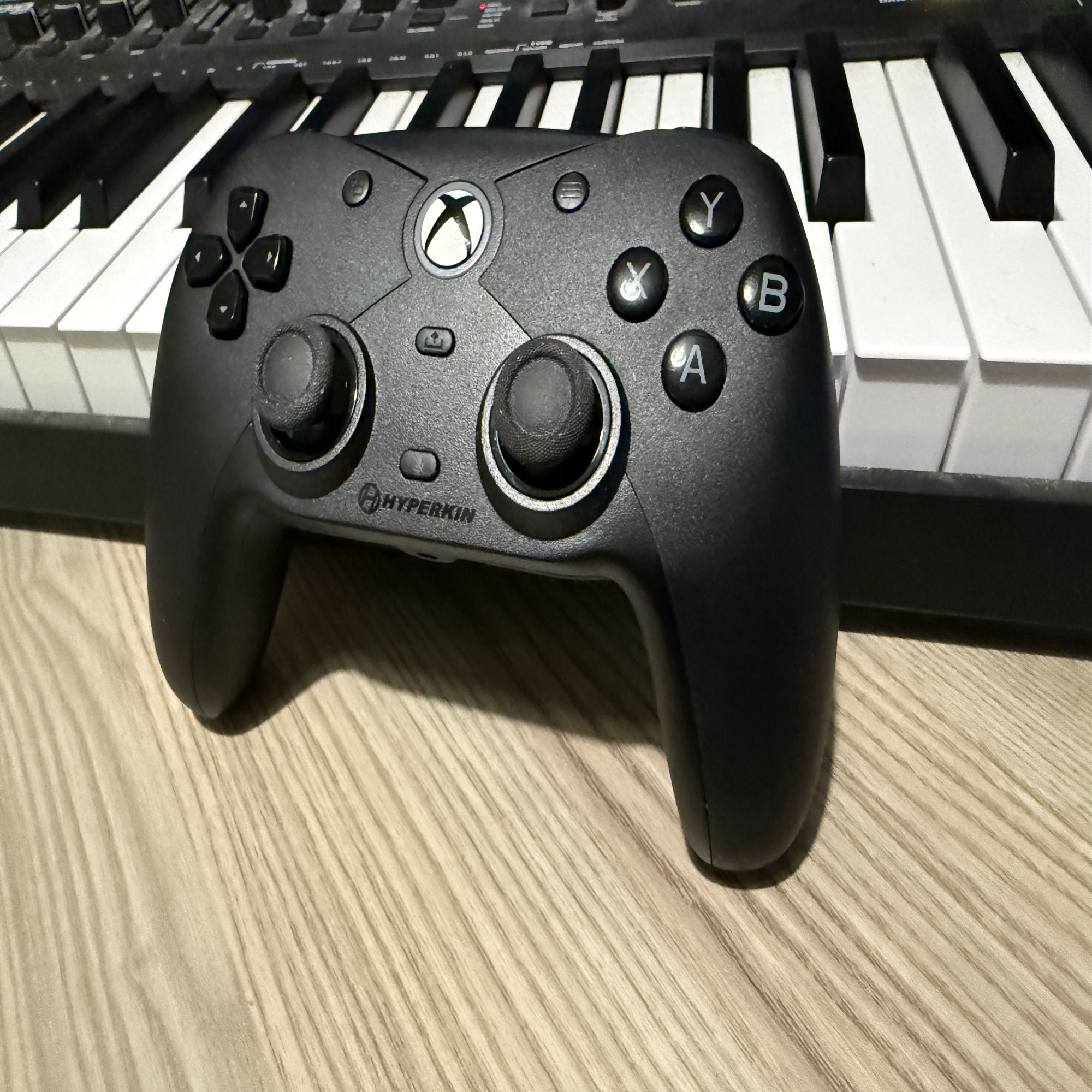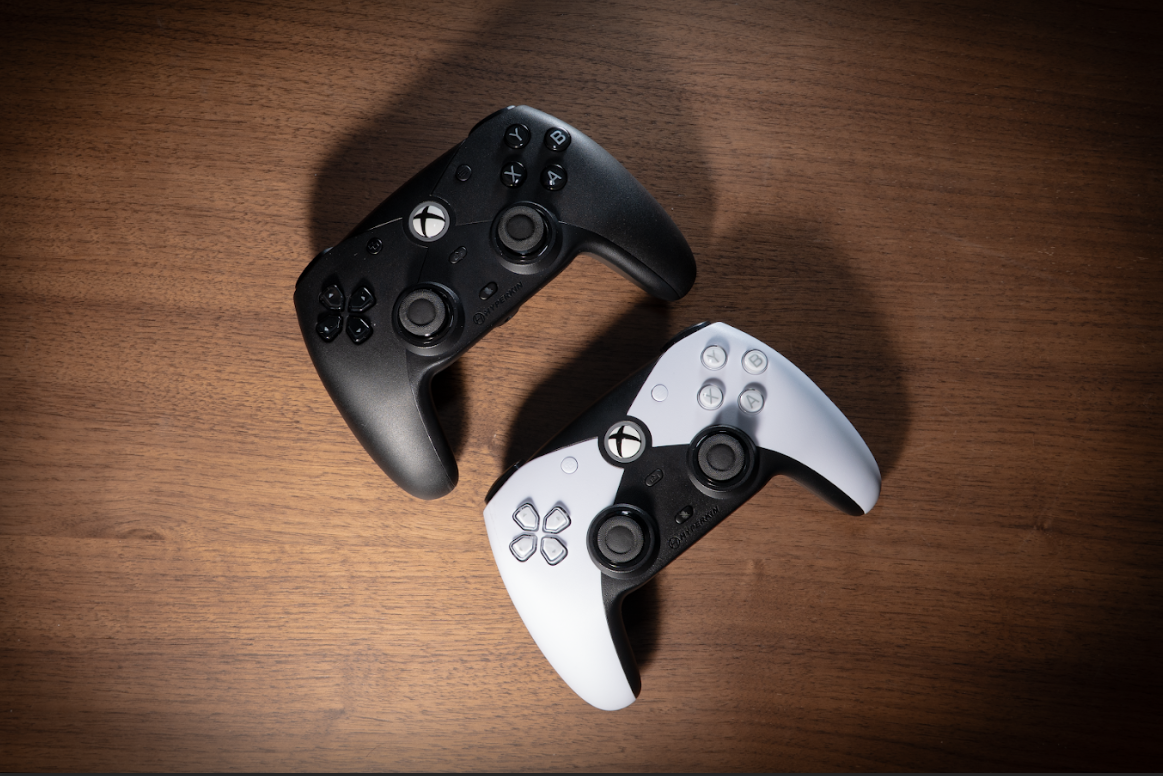I’ve never wanted a DualSense for my Xbox. Having been gaming on a Microsoft system since the Duke, I’ve always been fairly happy with the Xbox controller designs, particularly the latest one which I think is an all-timer, and similarly with PlayStation. The DualSense is a masterclass, and never the twain shall meet.
Until now, that is.
Hyperkin have taken it upon themselves to create a hybrid that should satiate players that are looking for a more PlayStation-esque experience on their Xbox systems. Now, that particular crowd may be small, but if for some reason you can’t get to grips with the grips on what Xbox provided with their console, this one of the very few controllers on the market that genuinely offers up something different.
Whilst I’ve spent a good portion of the year tearing through hardware reviews, and gleefully so, I had my eye on Hyperkin’s The Competitor since it was announced. The buzz was immediate because, well, a PlayStation layout on an Xbox? What’s next? A giraffe found in the Serengetee barking? Madness. And yet, when you have the controller in your hands, it all begins to make sense. This is a comfortable, affordable controller offering up an option that has really mixed it up in a pool of third-party controllers that all look exactly the same.

So yes, it’s out of the way now and we can get into why The Competitor is a, um, competitor for your official Xbox joystick, as my Mum would call it.
The symmetrical stick layout should be familiar to anyone who has played a PlayStation controller since the original DualStick on the PSX. It feels incredibly natural and light, thanks to the controller being wired rather than wireless and ergo, having no use for a hefty battery inside.
The sticks are Hall Effect, offering up precise movement and immediate recognition to your desired direction, placed dutifully next to each other. The D-Pad is also ripped directly from a DualSense, and is for my money the best D-Pad this side of a Switch Pro Controller. There are also two programmable back paddle buttons should you want to move any inputs onto the grips of the controller.

The aforementioned lightness of the controller may be something to consider. Of course, this being a wired controller the need for a battery is mute, so the weight of The Competitor is drastically lowered in comparison to a DualSense or Switch Pro. It looks premium for sure, but it doesn’t feel it in terms of holding the controller. I’ve had long sessions with it and it never once felt heavy. It’s a form over factor. Some will love this. Some won’t.
What is strange are the face buttons, which are smaller than any you’ll find on the DualSense or an official Xbox controller. The option and share buttons feel just a bit too small for me under my fingers, which is an odd sensation, considering my muscle memory and where they are when I move my fingers to press them. Whilst they’re springy and responsive, it took me second to remember where they were in comparison to the DualSense, and is an odd choice considering how everything else feels nigh-on exactly the same.
Still, it wouldn’t be a worthy third-party controller without back paddles now, would it? The grip-located extra buttons proved super handy during a rather intense Fortnite game I was playing. I mapped the LB and RB buttons to the paddles and found it strangely easy to switch over. They sit naturally where your finger would be when holding the controller, and have a lock-in system when not being used, meaning they won’t respond to presses when they aren’t mapped or unlocked. Neat.

Elsewhere it has a 3.5mm headphone jack, the standard Menu, Share and View buttons and, new for an Xbox controller, a microphone mute button, clearly another design option lifted from the DualSense. I was provided with an all black controller, though the white and black one looks just as appealing and looked natural next to my official controllers on my TV unit.
What it does lack is vibration or haptic feedback, two staples of the modern DualSense controller. I found I didn’t miss them at all as I knew I was playing Xbox, but it certainly may be something you miss if you’re crossing over. No doubt a decision to keep costs down, it’s hardly a dealbreaker.
And after putting it through its paces on a fun-filled Xbox afternoon playing Halo Reach, Indiana Jones, Forza Horizon, Goldeneye and Avowed (it was a good day), I found The Competitor to be a brilliant worthy erm, competitor to the official Xbox controller. Particularly in shooters, having the mappable buttons allowed me to push reload to them and they’re easily pressed with little force needed, which was incredibly helpful in a prolonged firefight against The Covenant.
And sitting at only £40 on Amazon as I type this, it’s difficult to argue that you’re getting real value for money taking The Competitor into consideration. It’s light, sure, and wired (though the cable it comes packaged with is a 10 feet USB cable, so you’ve plenty of give in that regard) but performs very well and as you would expect, mixing up the Xbox controller options with aplomb. I would argue it’s one of the best third-party options available right now.
Now I know why it was called The Competitor.
Hyperkin’s The Competitor is available on October 29th from the usual retailers. Pick it up from Argos here.
Developer: Hyperkin
Disclaimer: In order to complete this review, we were provided with a promotional controller. For our full review policy, please go here.
If you enjoyed this article or any more of our content, please consider our Patreon.
Make sure to follow Finger Guns on our social channels. Twitter, Facebook, Twitch, Spotify or Apple Podcasts – to keep up to date on our news, reviews and features.
